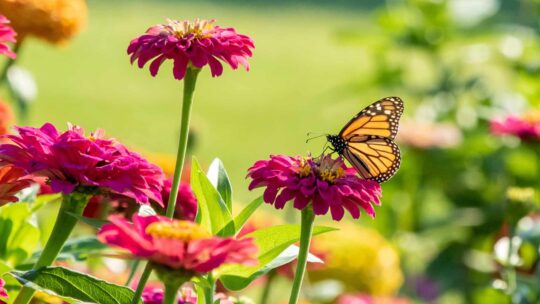With spring in full swing, ensuring adequate water for our gardens becomes priority. Through the process of supplemental watering—alongside watching the radar for pop-up thunderstorms—many gardeners are acutely aware of precipitation levels. However, by using a rain gauge, you can measure rainfall at home more accurately. And, you don’t need to rely on the local weatherman to tell you just how much rain has fallen. A rain gauge can also prevent overwatering, which can be just as detrimental as drought to some species of flora. They can even be used to measure and calibrate garden sprinklers, which is beneficial for ensuring proper watering, all year-round.
A simple device used to catch and measure rainfall, rain gauges can assist with water conservation in regions of the country where drought is an issue. They can also provide data to ensure an appropriate and precise watering regime to keep your gardens and lawns in bloom. Gauges vary in style from simple, inexpensive cup-style analog gauges to rain gauges with a digital readout, and typically measure levels in centimeters or millimeters. It’s even possible to create your own rain gauge to measure rainfall at home—all you need is a pocketknife, soda bottle, and a permanent marker!
Rain Gauge Installation Tips

- Install your rain gauge on a single post in an open area, without a tree or roof canopy covering it.
- As a basic rule of thumb, locate the gauge twice the distance away from the height of any nearby objects. (i.e., 30 ft. away from a 15 ft. tree or shed.)
- To improve accuracy and precipitation catch, install the gauge approximately 5 ft. off the ground—this reduces the wind speed and impact of nearby obstacles.
- Ensure that the gauge is mounted level and install the gauge so that the top is several inches higher than the mounting post.
- Bevel the mounting post, as shown in the photo, to prevent splashing from the post into the gauge.
- Locate the gauge away from artificial sources of precipitation such as: sprinkler systems, splashing from swimming pools, or roof gutters.
How to Use A Rain Gauge to Measure Rainfall at Home
- To read the precipitation, look at the measurement marks on the side of the gauge. The water line may appear curved (this is called a meniscus), so read the measurement at the lowest point of the curve.
- Be sure to read the gauge immediately after a precipitation event for the most accurate results, as other weather factors can impact an accurate reading. For instance, heat and evaporation could skew the measurement.
- Dump the gauge after each reading to provide an empty gauge for the next rain.
- Record your data to track and monitor precipitation and plan your watering schedule accordingly. Happy gardening!




